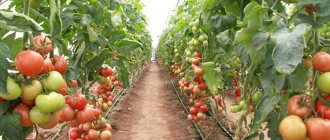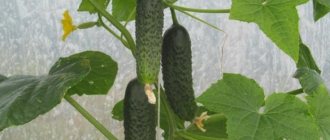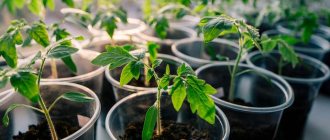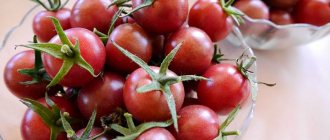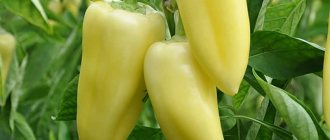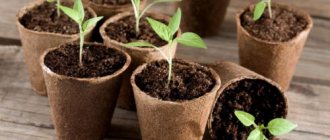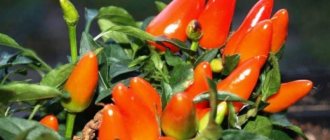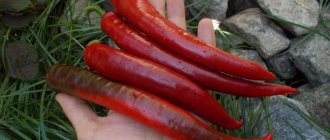Even in the smallest garden plots, gardeners strive to grow sweet peppers, which can be used to prepare a variety of dishes. To get a bountiful harvest, you need to familiarize yourself with the description of several varieties of this vegetable crop. The “Gypsy f1” pepper variety received excellent reviews from breeders and summer residents. The main advantages of this hybrid are high yield and a high percentage of commercial fruit yield. By the way, they look very appetizing, as the photos prove.
What kind of pepper is this
Let's take a closer look at what Gypsy pepper is, its main characteristics and distinctive features.
Hybrid F1
The Gypsy F1 hybrid was launched in 2005 by the Dutch company Monsanto Holland. Pepper seeds are supplied to the Russian market by Semenis. In 2007, the hybrid was included in the State Register of Breeding Achievements used for cultivation in the Russian Federation.
This pepper is most often planted in gardens and gardens. Subject to compliance with agricultural technology and care rules, it is recommended for cultivation in the Urals and Siberia (under film cover).
Characteristics and description of the hybrid
Gypsy belongs to the early maturing Dutch hybrids . The first fruits appear 60 days after the seedlings are planted in the beds. The hybrid is intended for cultivation in a greenhouse and in open ground.
Gypsy pepper has a universal table purpose . It is eaten fresh, used in the preparation of various dishes and canned.
Distinctive features
The bushes of the plants grow of medium size , the branches are semi-spreading, the stems are not strong.
Attention! To prevent the pepper from falling from gusts of wind and under the weight of the fruit, immediately after planting it is called to a support peg.
The foliage of pepper is bright green.
Fruit characteristics, yield
The fruits of the Gypsy hybrid are not large, but their shape is even . The average weight of one pepper is 110 g. Length - 10-11 cm, width - 5-6 cm.
Features of the fruit:
- the skin is thin but dense;
- the shape is cone-shaped, gradually tapering upward;
- walls 5-6 mm thick;
- the pulp is juicy, crispy;
- the taste is sweet, without bitterness or pungency;
- Resistant to cracking.
Important! Peppers are technically ripe when they turn yellow. Only fully ripened fruit has a bright red color.
The Gypsy hybrid is consistently productive . During the season, from one plant you can harvest from two to 2.5 kg of pepper.
Pepper Gipsy F1 (Seminis) crop in the field
Similar hybrids
According to the description and characteristics, Gypsy pepper is similar to the following hybrids:
- Pinocchio F1;
- Tempo F1;
- Adler F1;
- Fisht F1;
- Admiral F
Pinocchio is a tall hybrid that grows up to 1 meter when cultivated in greenhouses. In open ground, the bush rarely exceeds 0.7 m. Pepper reaches the stage of technical maturity 3 months after the seedlings emerge. Fruits of the Hungarian type (cone-shaped) weighing 120 g. and up to 17 cm long. The thickness of the pericarp is on average 5 mm. Taking into account the planting density of 5 to 8 plants per square meter, 11-14 kg of crop is harvested, respectively. When biological ripeness occurs, the fruits acquire a dark red color.
Temp F1 is an early ripening and drought-resistant pepper. The bushes are medium-sized, not exceeding 60-70 cm. The fruits are cone-shaped, red, weighing 100-120 g. Productivity per sq. m. ranges from 6 to 9 kg, depending on cultivation conditions.
Adler belongs to the mid-early hybrids with a ripening period of 98-112 days from the beginning of the growing season. The bush is tall, up to 1.3 m, standard, medium leafy. The hybrid is well adapted to adverse weather conditions. The color of the fruit when fully ripe is red. The average weight of one copy is 140 g. The plant has average resistance to diseases.
Fisht has early ripening periods. After planting the seedlings in the ground, the hybrid produces a harvest within 50 days. Cone-shaped ripe red peppers, weighing up to 180 g. The fruits are very thick-walled - up to 1 cm, some specimens have a pericarp up to 2 cm. The plant tolerates lack of moisture and heat well.
Admiral F1 produces a harvest 100 days after germination. The bush grows up to 1-1.3 m. Cone-shaped fruits with a wall thickness of 6 mm weigh from 140 to 150 g. When fully ripe, they acquire a red color. The hybrid is resistant to drought and disease, vegetables have good transportability. Yield indicators are 5.4-6.2 kg.
Preparation for cultivation
Before sowing, the seeds are dipped in a weak solution of potassium permanganate . Those that float up are thrown away, and the rest are washed under running water, dried and sown in prepared soil.
For Gypsy, as for many other varieties, sandy or loamy soil with lumps and humus is suitable.
It is better to plant pepper seeds for seedlings from mid-February to mid-March . It is then planted in the greenhouse around the end of May. But for open ground, seeds are planted several weeks later, planting seedlings in mid-June.
Gypsy pepper is considered unpretentious, but in order to get a large harvest, it is important to meet several conditions :
- Warm soil is preferable, so it is advisable to make beds that look like small mounds 40-50 cm high.
- Due to the low foliage of plants during the growing season, it is necessary to choose more shaded places so that the bushes and fruits do not burn from the bright sun.
Other Dutch hybrids:
Dutch hybrid pepper "Gemini f1"
Hybrid pepper “Claudio” and features of caring for it
Rules for planting and growing
If you decide to start growing this pepper, then when planting you should remember the following:
The soil should be prepared in advance so that the peppers take root well in it.
Important! It is best to dig it up with humus or peat a few weeks before planting. The place for planting the plant must be selected with sufficiently good lighting. Important! The bushes of this variety do not have such a large leafy part, so on too hot days it is worth shading the plants so that they do not get burned from the scorching rays of the Sun. Initially, it is worth building a support-type peg for each bush; this is necessary so that the bushes do not break when fruit appears.
In order to avoid various problems, when growing this variety you must follow these rules:
Provide plants with adequate watering
Important! The frequency of watering should be adjusted depending on the weather outside. When there is a lot of rain, plants do not need artificial watering. Apply fertilizing in a timely manner
It is best to do this in the spring and autumn. Proper application of fertilizing will ensure a large amount of harvest. From one bush you can collect up to 4.5 kg of fruit. If you notice dried or damaged parts of the bush, they should be removed immediately.
Growing seedlings
Growing pepper seedlings is not difficult if you know how to do it correctly.
Planting pepper
In the picking option, the seeds are planted in a common container in pre-moistened soil to a depth of 1 cm .
If without picking, then you need to plant them immediately in separate containers. To ensure reliable germination, you can take 2-3 seeds per dish and then leave the strongest plant. Then the container is covered with film and placed in a warm place - for example, near a radiator. Mostly, the seeds germinate within a week, sometimes a little more.
Afterwards, the film is removed and the seedlings are kept at a temperature of +16-18 °C during the day and +14 °C at night for a week. This is necessary to prevent the peppers from stretching and forming a powerful root system. During the rest of the period, the temperature is maintained within +18-25 °C.
Further care
Water the seedlings regularly as the top layer of soil dries. Picking is carried out only when the top two leaves grow.
During the period of plant growth, several feedings are done with mineral fertilizers. The first time - 7 days after picking, or 14 days after germination, if planted without picking. The second time is fed 11-12 days after the first time. The third time, fertilizers are applied a couple of days before transplanting the seedlings into open ground or a greenhouse.
Transplant the seedlings to a permanent place carefully so as not to break the fragile stems of the plant. Before planting, fertilizers are placed in the hole; humus is best. Peppers are planted in a row at a distance of about 30 cm from each other, and up to 50 cm are left between rows.
Important! During the flowering period, when the fruit begins to form, it is recommended to increase the frequency of watering.
Tips for Growing Gypsy Peppers
Agricultural technology is simple. Timely watering and fertilizing. Care, weeding, loosening and tying so that the stem does not break. As the height increases, tying is repeated. Also, do not forget about the weak root system, due to which picking is contraindicated for it. This should be taken into account when choosing a container for seedlings.
When to sow seedlings
The optimal time for sowing seeds for seedlings is February. But you can sow until mid-March, depending on the region. You need to focus on the timing of planting in the ground. By this time, the root system should be sufficiently strong and ready for replanting. Until this moment, it is not recommended to pick seedlings. It is better to sow one seed at a time into the container where the seedlings will grow.
How many days do the seeds take to germinate?
Pepper seeds germinate within 5-15 days from planting. In order for the seeds to germinate faster, the temperature is maintained in the range of 25°C - 30°C. Also, the seeds should be soaked before sowing. It is better to do this in a weak solution of potassium permanganate. In this case, some seeds may float. They should be thrown away.
When and at what distance to plant in the ground
Seedlings are planted at the age of 60 days. By this time, the plant will have several true leaves, and the root system will have developed sufficiently for replanting. The likelihood of return spring frosts should no longer exist. If you grow it in a greenhouse, then the planting date is the third ten days of May. When grown in open ground - the second ten days of June. The soil should already warm up to +16°C. Since the plant has a rather thin stem, they immediately prepare a support to which it will be tied.
The distance between plants depends on the type of planting. When growing in staggered patterns, a distance of 30 cm is maintained between plants, and 30 or 50 cm between rows. When planting in one row, they are planted according to a 40×60 pattern.
When planting seedlings with buds or flowers in a permanent place, they are removed from the bush to facilitate acclimatization.
Ripening period
Gypsy pepper is an early ripening hybrid. The first harvest can be harvested three months after the seedlings begin to emerge. Thus, provided that peppers are planted in a greenhouse in early May, the first harvest can be harvested in June.
Watering
Gypsy pepper seedlings are watered immediately during planting. The next watering is carried out after 4 days.
After this, watering is carried out as necessary, assessing the condition of the soil, usually once a week. As soon as the first fruits begin to set, watering is stopped and resumed from the moment of the second flowering.
The optimal time for watering is morning and evening hours. The water temperature is not lower than +22 °C. Watering is carried out at the root. Up to 2.5 liters of water are consumed per plant.
What and when to feed
In order for the pepper yield to be at a high level, it must be provided with all useful components; for this it must be fed.
During the growth period, 3 feedings are carried out:
- Mineral fertilizers are applied 3 weeks after planting the seedlings.
- Organic fertilizers are applied at the beginning of fruiting.
- The last feeding is carried out after 2 weeks.
Should I dive?
A weak root system makes its own adjustments to the growing conditions. Picking is not recommended. The best option for planting seedlings in peat pots. If picking is necessary, do it carefully, trying not to damage the roots.
When the pepper is planted in a permanent place, it is immediately tied to a support, since its stem is quite weak. You can also form a bush. To do this, it is recommended to remove the first central flower, as it takes a lot of effort. Step-sonning is necessary. Remove withered leaves and weak embryos. This procedure is carried out throughout the entire growing period.
Diseases and pests
Gypsy f1 has strong immunity. Tobacco mosaic poses no danger to him. Late blight can cause the greatest harm to it. There is also a high chance of bacterial spot infection. To prevent this from happening, it is necessary to take preventive measures that will reduce the likelihood of infection. From natural remedies, you can use iodine solution. Hydrogen peroxide will also be useful.
Gypsy also has poor resistance to sclerotinia and can suffer from gray and blossom end rot. To prevent infection, plants are treated with special preparations or folk remedies.
Various pests also pose a danger to the plant. Aphids and spider mites are especially dangerous. To combat them, natural remedies are used, mainly infusions of wormwood or potato tops.
Features of cultivation and possible difficulties
First, you need to decide on the growing location and the exact time of planting in permanent soil.
According to many gardeners, the hybrid does not tolerate picks and transplants . Therefore, the best option is to plant the seeds in separate pots and peat containers. Pepper seedlings are not particularly powerful. But regular fertilizers and fertilizing stimulate the appearance of lush, dark greenery.
In a permanent place you need to plant no more than 6 plants per 1 square meter. m . It is advisable to immediately tie the bushes to the stakes so as not to add unnecessary stress to the flowering peppers.
Do not forget to regularly feed and water the crop .
Fruit characteristics
Gardeners highly value the properties of the fruits of the hybrid variety “Gypsy”. During the period of technical ripeness, vegetables acquire a light yellow tint. When peppers enter the stage of biological maturity, their surface becomes bright, colorful scarlet.
The hybrid form of pepper is called early ripening. This is fully confirmed by the reviews of numerous gardeners who have already grown the “Gypsy f1” variety of sweet peppers. From the moment of planting prepared seedlings in a permanent place until harvest, as a rule, no more than 63 days pass.
The fruits of this hybrid themselves are different:
- correct form;
- one-dimensionality;
- small in size.
The first pepper harvest can be harvested in just 63 days
Such vegetables are suitable not only for preparing salads and eating fresh. The attractiveness of these peppers is that they are an excellent base for stuffing, canning, preparing vegetable caviar and lecho.
The fruits of "Gypsy f1" have a conical, uniform shape. Peppers have 2-3 nests. The fruits of this variety are medium-sized, drooping, “Hungarian” type. Their diameter is 5.5-6.5 cm. As for the length, for these peppers it varies from 11 to 14 cm.
Typical diseases and pests
Gypsy pepper is resistant to tobacco mosaic, but requires prevention against late blight and bacterial spot. For this, iodine and hydrogen peroxide are used. The bushes are sprayed every two to three weeks with a solution of iodine or peroxide at the rate of 15-20 ml of the drug per 10 liters of water.
The plant can be attacked by the following pests:
- spider mite;
- aphid;
- whitefly
To combat them, use folk remedies:
- Wormwood infusion . Take 200-250 g of dried wormwood and pour 10 liters of hot water. Leave for 30-40 minutes. Then spray the plants with liquid and water the beds.
- Infusion of onion peels . Take 100 g of husk per 5 liters of water. Leave the solution for 3-4 days, then process.
- Potato tops . The infusion is prepared from 3 kg of green leaves and potato stems, which are poured into 15 liters of warm water. All this is infused for 2-3 hours, then the pepper is sprayed.
Transplanting into open beds or a greenhouse
Transplantation into open ground is carried out when the plant reaches at least 20 cm in height. It should have 10 leaf blades. A week before transplanting, seedlings are hardened off by taking them out into the fresh air every day or leaving them near an open window (first for an hour, then gradually increasing the time).
For Gypsy bell peppers, it is important to choose the ideal place in the open ground.:
- Despite the fact that the plant can bear fruit even on poor soils, it needs to be provided with a well-lit area, away from tall vegetation, located in a lighted, windless place, on a small hill.
- When planting, make sure that there are no more than 5 plants per square meter of land.
- The root system must be at a depth of at least 10 cm from the surface of the earth.
Plants are planted in cloudy weather or in the evening when the sun's activity subsides, otherwise the peppers will get burned. Make holes at a distance of 40 cm. Put humus in them. Planted in straight rows or in a checkerboard pattern. The variety does not have strong foliage, so the bushes are shaded, otherwise, if there is excessive solar activity, the pods will get sunburned and die.
Features of care
After planting the Gypsy pepper, caring for it consists of destroying weeds, loosening, watering, and fertilizing. Loosen the soil a few minutes after watering or rain, so that as it dries, a dense crust does not form on the surface of the soil.
Before the buds appear, the depth of loosening is 6 cm, during flowering - 10, when fruits form, the depth is increased to 14, and then gradually reduced to 6 cm.
Water the pepper bushes the first time after transplantation, then after 4 days. Next, moisten the soil once a week until fruiting. When the ovaries form, watering is stopped, and only before the start of the second flowering is the process resumed. Water in the morning and evening using warm water (at least +22 degrees). Pour water under the root or between the rows so that the liquid does not fall on the leaves. One bush requires at least 2 liters of water.
In the garden, Gypsy peppers are fed after 3 weeks with nitrogen-phosphorus fertilizers. During flowering, water with a solution of 20 g of boric acid, half a kilo of granulated sugar dissolved in 10 liters of water. During fruit ripening, they are fed with a mixture of 40 g of superphosphate and 20 g of potassium nitrate, diluted in 10 liters of water.
The plant requires obligatory garter due to extremely fragile branches. Near each bush, pegs more than 60 cm high are dug in. The bushes are carefully tied to them.
Gypsy is not afraid of tobacco mosaic, but prevention is necessary against rot, late blight, sclerotinia, and bacterial spot. For this purpose, the bushes are treated with iodine, hydrogen peroxide, decoctions of wormwood, onion peels, and potato tops. In the fight against spider mites, aphids, and whiteflies, the insecticides Aktara and Aktellik are used.
Early sweet pepper Gipsy f1 from Holland is a fairly young variety that has earned popularity among gardeners for its high yield and early ripening of fruits. If you provide the fragile plant with good conditions, it will delight you with delicious, fresh peppers already at the beginning of summer.
Advantages and disadvantages of a hybrid
The benefits of pepper include:
- dense skin - ensures ease of transportation without loss of taste characteristics and presentation of the fruit;
- pleasant taste and aroma;
- big harvest;
- early ripening - 55-65 days after planting the plants in the beds;
- unpretentiousness;
- resistance to a number of diseases;
- cold tolerance.
Disadvantages of a hybrid:
- thin walls of the fetus;
- The harshness of peppers remains even after heat treatment.
Benefits of Gypsy Peppers
Another attractive feature of the vegetables that this variety produces is the presence of a dense skin with a slight waxy coating. Thanks to it, the fruits do not crack.
The average weight of pepper fruits is 120 grams
Attention! Peppers of the hybrid variety "Gypsy" are an excellent solution for growing for sale. They are easily transported over long distances and last a long time.
Gardeners also like the excellent taste of these vegetables. The fruit has moderately juicy, crispy, slightly sweet flesh. There are no burning or bitter notes in it. The skin of the fruit is quite dense, but not rough. The rich aroma of vegetables is no less attractive. Theirs is pronounced, deep, typically peppery.
On average, the fruits weigh 120 g. The walls of the peppers cannot be called thick. Their maximum parameter is 5 mm.
Pepper "Gypsy F1" is great for fresh consumption and stuffing
"Gypsy" is an excellent hybrid variety of sweet peppers. They can be grown for yourself and for commercial purposes.
Reviews
Summer residents generally respond positively to the hybrid ; there are only some complaints about the taste and thin stems of the plant.
Vladimir, Kovrov : “This hybrid did not disappoint me. I decided to buy a bag of seeds in the store to try. I grew seedlings from them, then planted them in the ground. The peppers turned out to be small and compact, but they had a lot of fruit. I liked their taste and shape. I will continue to plant it and I advise you to do the same.”
Maria, Chelyabinsk : “Gypsy pepper is very sweet. We've been friends with him for several years. Every year we are pleased with a large harvest. I mainly use it for salads and canning. I didn't notice any shortcomings. The hybrid is quite easy to care for. The only thing that can be noted is the need to install support pegs for each bush, otherwise the plants will break.”
Elena, St. Petersburg : “The pepper is not bad, but it’s too sweet, it’s not for everyone. It didn’t stay with me, but not because it’s bad, but because there’s something missing in the taste. In general, it has many advantages and is worth growing for those who are too early to plant more demanding varieties in their garden.”
Growing conditions
The Gypsy hybrid does not have any special care requirements, however, to speed up the process and obtain the best results, some nuances will have to be observed.
It likes to sprout in warm soil, so plant it in beds in the shape of 0.5 m mounds. Another nuance is that the bushes do not have dense foliage, so in order to avoid the pods burning out in the sun, it is better to shade the sprouts a little.
Deadlines
The timing of growing Gypsy depends on where you are going to grow the bushes and when you plan to transplant them into open ground. If you are the owner of an excellent greenhouse, and you know that the plants in it are not afraid of frost, then you can plant seeds for seedlings already in the first days of March, respectively, plant them in the greenhouse in the last week of April.
In this case, you will begin to harvest the crop from the beginning of summer; in good conditions, the plant will bear fruit for a long time, and it will bear fruit for about 2 months.
If you do not have a greenhouse or you decide to plant seedlings directly in open ground, then you should wait a little and sow the grains in early April.
Selection of capacity
Almost all summer residents claim that the Gypsy pepper does not tolerate replanting, much less picking. The roots of the plant are sensitive and it is easy to damage them; to avoid this, plant the grains directly in individual pots. An excellent option is peat cups, especially since the seeding material for Gypsy peppers is not the cheapest and you don’t want to damage the plants.
Substrate requirements
Gypsy pepper is not particularly picky about soil, but it likes to grow in loamy or sandy loam soil with humus. The culture does not tolerate large amounts of nitrogen in the soil. Slightly acidic soil is not suitable for growing early varieties, so add chalk or lime to the soil to increase acidity.
You can choose a substrate for peppers or use a mixture for growing indoor plants. They are similar in composition, and this culture can grow and develop in them.
Hybrid characteristics
“Gypsy” is an ultra early, highly productive hybrid variety of sweet pepper, the seeds of which are supplied to Russia by the Dutch.
The hybrid is included in the State Register of the Russian Federation and is recommended for cultivation on private farms located in the European part of our country. "Gypsy" develops and bears fruit equally well both under film covers and in open ground.
"Gypsy" bushes are semi-spreading and low. Many gardeners note that the stems of plants of this hybrid are quite thin and frail in appearance, so even if their height is small (about 50 cm), the bushes have to be tied to stakes.
Advice. The root system of the bushes is delicate and does not tolerate picking very well, therefore, in the case of seedling cultivation, the seeds of this hybrid should not be sown in a common box, as is usually done, but in separate peat pots or plastic cups.
“Gypsy” plants are moderately or weakly leafy, the leaf blades are slightly wrinkled, medium in size, colored in an intense green color.

